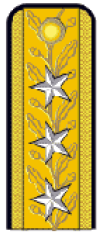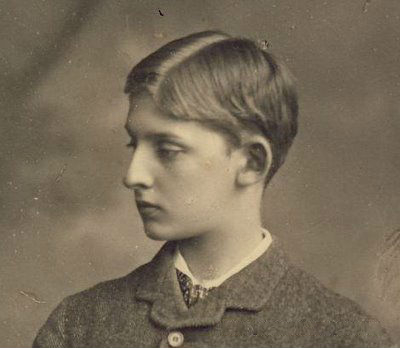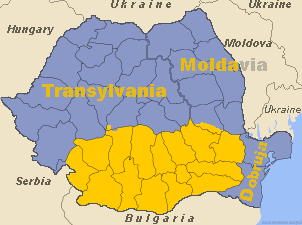|
Union Monument, Iași
Union Monument (), a monument of white marble in the Romanian city of Iaşi, was designed by Princess Olga Sturdza and unveiled in 1927 at the base of Carol Boulevard. It consists of a central piece (the Motherland) and four smaller ones representing the historic provinces of Transylvania, Bessarabia and Bukovina (incorporated into Romania at the end of World War I) and the Romanian diaspora. Demolished in 1947 as the Romanian Communist Party was tightening its grip on the country, it was rebuilt in 1999, this time being placed in Piaţa Naţiunii, in front of the Grigore T. Popa University of Medicine and Pharmacy. History On 1 August 1924, Princess Olga Sturdza sent a letter to the Iaşi mayor's office, expressing her intention to donate to the city a marble monument symbolizing the Great Union of 1918: The monument was to be placed at the entrance to the palace of the great ''logofăt'' Dumitrache Cantacuzino-Paşcanu, at the end of Carol I (later Copou) Boulevard, wher ... [...More Info...] [...Related Items...] OR: [Wikipedia] [Google] [Baidu] |
Copou Garden
The Copou Park or Copou Gardens is the oldest public park in Iași, Romania. Its development started in 1834 under the reign of Mihail Sturdza, making the park one of the first public gardens in Romania and a Iași landmark. In its centre lies the Lions' Obelisk (1834), a tall obelisk dedicated to Regulamentul Organic, the first law on political, administrative and juridical organization in the Romanian Principalities. Other landmarks include Eminescu's Linden Tree, the Mihai Eminescu Museum and the Junimea Alley. The gardens are a popular destination for tourists and locals, as well as a favourite location for poetry festivals, photography exhibitions and art and craft fairs. The park covers approximately 10 hectares (down from 19 hectares at the height of its late-19th century development) and has been described as one of the most beautiful public gardens in Moldavia.Ionel Lupu. ''Parcul Copou: Studiu Dendrologic. Cu note consultative privitoare la proiectul edilitar de "Re ... [...More Info...] [...Related Items...] OR: [Wikipedia] [Google] [Baidu] |
Prince Mircea Of Romania
Prince Mircea of Romania (; 3 January 19132 November 1916) was the third son and youngest child of King Ferdinand of Romania and Marie of Edinburgh and the Grandchild's child of Queen Victoria through his mother. He died aged 3 in November 1916. Birth Prince Mircea was born in Bucharest on , as the third son and youngest child of the Crown Prince Ferdinand of Romania and the Crown Princess Marie of Edinburgh. He was baptised on at the Royal Palace (presently the National Museum of Art). Prince Eitel Friedrich of Prussia arrived by train to Bucharest to represent his father. He was met there by King Carol I, Crown Prince Ferdinand and Prince Carol. His godparents were the German Emperor Wilhelm II, King Carol I, Queen Elisabeth and Empress Maria Feodorovna of Russia. His mother, the Crown Princess, was absent due to a possible attack of phlebitis. During his short life, he was known to get along very well with his sister, Princess Ileana of Romania. His governess was M ... [...More Info...] [...Related Items...] OR: [Wikipedia] [Google] [Baidu] |
Princess Ileana Of Romania
Princess Ileana of Romania, also known as Mother Alexandra (5 January 1909 – 21 January 1991), was the youngest daughter of King Ferdinand I of Romania and his consort, Queen Marie. She was a great-granddaughter of Emperor Alexander II of Russia, Queen Maria II of Portugal, and Queen Victoria of the United Kingdom. She was born as ''Her Royal Highness'' Princess Ileana of Romania, Princess of Hohenzollern-Sigmaringen. Birth and early life Ileana was born in Bucharest on 5 January 1909, the youngest daughter of Queen Marie of Romania and King Ferdinand I of Romania. Ileana had four older siblings: Carol, Elisabeth – later Queen of Greece, Princess Maria – later Queen of Yugoslavia, and Nicholas; and a younger brother Mircea. Her mother wrote in her memoirs: Girl Guiding Before her marriage, Ileana was the organizer and Chief of the Romanian Girl Guide Movement. Later, Princess Ileana was involved in Guiding in Austria and served as president of the Austrian Girl Gu ... [...More Info...] [...Related Items...] OR: [Wikipedia] [Google] [Baidu] |
Maria Of Yugoslavia
Maria (born Princess Maria of Romania; 6 January 1900 – 22 June 1961), known in Serbian as Marija Karađorđević ( sr-Cyrl, Марија Карађорђевић), was Queen of the Serbs, Croats and Slovenes from 1922 to 1929 and Queen of Yugoslavia from 1929 to 1934 as the wife of Alexander I of Yugoslavia, King Alexander I. She was the mother of Peter II of Yugoslavia, King Peter II. Her citizenship was revoked, and her property was confiscated by the Yugoslav communist regime in 1947, but she was posthumously rehabilitated in 2014. Early life Maria was born on 6 January 1900, at Friedenstein Palace in Gotha, a town in Thuringia, in the German Empire. She was named after her maternal grandmother, Grand Duchess Maria Alexandrovna of Russia, and was known as ''Mignon'' in the family to distinguish her from her mother. Her parents were Prince Ferdinand I of Romania, Ferdinand of Hohenzollern-Sigmaringen – Ferdinand I of Romania – and Princess Marie of Romania, Marie of Edi ... [...More Info...] [...Related Items...] OR: [Wikipedia] [Google] [Baidu] |
Elisabeth Of Romania
Elisabeth of Romania (Elisabeth Charlotte Josephine Alexandra Victoria; , , Romanization, romanized: ''Elisábet''; 12 October 1894 – 14 November 1956) was the second child and eldest daughter of Ferdinand I of Romania, King Ferdinand I and Queen Marie of Romania. She was Queen of Greece, Queen of the Hellenes from 27 September 1922 until 25 March 1924 as the wife of King George II of Greece, King George II. Elisabeth was born when her parents were crown prince and crown princess of Romania. She was raised by her great-uncle and great-aunt, King Carol I and Elisabeth of Wied, Queen Elisabeth. Princess Elisabeth was an introvert and socially isolated. She became crown princess of Greece when she married George in 1921, but she felt no passion for him and underwent the political turmoil in her adopted country after World War I. When her husband succeeded to the Greek throne in 1922, Elisabeth was involved in assisting refugees who arrived to Athens after the Population exchan ... [...More Info...] [...Related Items...] OR: [Wikipedia] [Google] [Baidu] |
Paris Peace Conference, 1919
Paris () is the capital and largest city of France. With an estimated population of 2,048,472 residents in January 2025 in an area of more than , Paris is the fourth-most populous city in the European Union and the 30th most densely populated city in the world in 2022. Since the 17th century, Paris has been one of the world's major centres of finance, diplomacy, commerce, culture, fashion, and gastronomy. Because of its leading role in the arts and sciences and its early adoption of extensive street lighting, Paris became known as the City of Light in the 19th century. The City of Paris is the centre of the Île-de-France region, or Paris Region, with an official estimated population of 12,271,794 inhabitants in January 2023, or about 19% of the population of France. The Paris Region had a nominal GDP of €765 billion (US$1.064 trillion when adjusted for PPP) in 2021, the highest in the European Union. According to the Economist Intelligence Unit Worldwide Cost of Liv ... [...More Info...] [...Related Items...] OR: [Wikipedia] [Google] [Baidu] |
Dniester
The Dniester ( ) is a transboundary river in Eastern Europe. It runs first through Ukraine and then through Moldova (from which it more or less separates the breakaway territory of Transnistria), finally discharging into the Black Sea on Ukrainian territory again. Names The name ''Dniester'' derives from Sarmatian ''dānu nazdya'' "the close river". (The Dnieper, also of Sarmatian origin, derives from the opposite meaning, "the river on the far side".) Alternatively, according to Vasily Abaev ''Dniester'' would be a blend of Scythian ''dānu'' "river" and Thracian ''Ister'', the previous name of the river, literally Dān-Ister (River Ister). The Ancient Greek name of Dniester, ''Tyras'' (Τύρας), is from Scythian ''tūra'', meaning "rapid". The names of the Don and Danube are also from the same Iranian word ''*dānu'' "river". Classical authors have also referred to it as ''Danaster.'' These early forms, without -''i''- but with -''a''-, contradict Abaev's hypoth ... [...More Info...] [...Related Items...] OR: [Wikipedia] [Google] [Baidu] |
Tisza
The Tisza, Tysa or Tisa (see below) is one of the major rivers of Central and Eastern Europe. It was once called "the most Hungarian river" because it used to flow entirely within the Kingdom of Hungary. Today, it crosses several national borders. The Tisza begins near Rakhiv in Ukraine, at the confluence of the and , which is at coordinates (the former springs in the Chornohora mountains; the latter in the Gorgany range). From there, the Tisza flows west, roughly following Ukraine's borders with Romania and Hungary, then briefly as the border between Slovakia and Hungary, before entering into Hungary, and finally into Serbia. The Tisza enters Hungary at Tiszabecs, traversing the country from north to south. A few kilometers south of the Hungarian city of Szeged, it enters Serbia. Finally, it joins the Danube near the village of Stari Slankamen in Vojvodina, Serbia. The Tisza drains an area of about and has a length of Its mean annual discharge is seasonally to ... [...More Info...] [...Related Items...] OR: [Wikipedia] [Google] [Baidu] |
Ferdinand I Of Romania
Ferdinand I (Ferdinand Viktor Albert Meinrad; 24 August 1865 – 20 July 1927), nicknamed ''Întregitorul'' ("the Unifier"), was King of Romania from 10 October 1914 until his death in 1927. Ferdinand was the second son of Leopold, Prince of Hohenzollern, and Infanta Antónia of Portugal, (daughter of Queen Maria II of Portugal and of Ferdinand II of Portugal, Prince Ferdinand of Saxe-Coburg and Gotha-Kohary). His Hohenzollern-Sigmaringen, family was part of the Catholic branch of the Prussian royal family Hohenzollern. In 1886, Ferdinand became heir presumptive to the Romanian throne, following the renunciation of his father (in 1880) and William, Prince of Hohenzollern, older brother. From the moment he settled in Romania, he continued his military career, gaining a series of honorary commands and being promoted to the rank of corps general. He married in 1893 Marie of Romania, Princess Marie of Edinburgh, granddaughter of both Queen Victoria and Alexander II of Russia, Emperor ... [...More Info...] [...Related Items...] OR: [Wikipedia] [Google] [Baidu] |
Danubian Principalities
The Danubian Principalities (, ) was a conventional name given to the Principalities of Moldavia and Wallachia, which emerged in the early 14th century. The term was coined in the Habsburg monarchy after the Treaty of Küçük Kaynarca (1774) in order to designate an area on the lower Danube with a common geopolitical situation.Heppner Harald, ''Österreich und die Donaufürstentümer 1774–1812. Ein Beitrag zur habsburgischen Südosteuropapolitik'', Habilitationsschrift, Graz, 1984, pp. 8–9 The term was largely used then by foreign political circles and public opinion until the union of the two principalities in 1859. Alongside Transylvania, the United Principalities of Moldavia and Wallachia became the basis for the Kingdom of Romania, and by extension the modern nation-state of Romania. In a wider context, the concept may also apply to the Principality of Serbia as one of ''The Principalities of the Danube'', Wikisource:The Principalities of the Danube which came under t ... [...More Info...] [...Related Items...] OR: [Wikipedia] [Google] [Baidu] |
Michael The Brave
Michael the Brave ( or ; 1558 – 9 August 1601), born as Mihai Pătrașcu, was the Prince of Wallachia (as Michael II, 1593–1601), Prince of Moldavia (1600) and ''de facto'' ruler of Principality of Transylvania (1570–1711), Transylvania (1599–1600). He is considered one of Romania's greatest national heroes. Since the 19th century, Michael the Brave has been regarded by Romanian nationalism, Romanian nationalists as a symbol of Romanian unity, as his reign marked the first time in history all principalities inhabited by Romanians were under the same ruler. His rule over Wallachia began in the autumn of 1593. Two years later, Long Turkish War, war with the Ottoman Empire, Ottomans began, a conflict in which the Prince fought the Battle of Călugăreni, resulting in a victory against an army nearly three times the size of the army of Michael the Brave, considered one of the most important battles of his reign. Although the Wallachians emerged victorious from the battle, ... [...More Info...] [...Related Items...] OR: [Wikipedia] [Google] [Baidu] |





